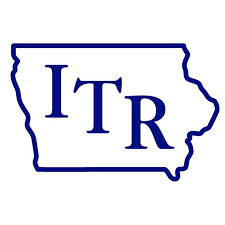Inspiration

PERRY BEEMAN Feb 6, 2018 | 5:14 pm
10 min read time
2,439 wordsAll Latest News, Business Record Insider, Innovation and EntrepreneurshipDes Moines Area Community College’s ciWeek9, running March 5-8, is all about inspiration and innovation.
This year, the sessions will be about a man who has attention deficit disorder but still managed to score a couple of high-tech A’s in community college classes that sent him soaring to a career as an explorer now planning his fourth exploration of the Titanic wreck.
It will be about a world-class drummer who knows that teamwork is important when you work for artists as diverse as the Rolling Stones and Celine Dion, and that innovation drives what happens in modern high-tech recording studios.
The sessions will examine the life lessons of getting stuck in unexpected currents under an iceberg.
And they’ll explain how reimagining boundaries can do everything from creating high-power partnerships among the likes of American Express and Wal-Mart to improving test scores at a small-town school.
We interviewed four of this year’s speakers in advance of the ciWeek presentations, hoping to get your curiosity primed. Here’s some of what
we learned.
KENNY ARONOFF
Kenny Aronoff, A-list drummer, said his presentation will intersperse his percussion performance with words of wisdom and photos and video of famous bands. “It is designed to talk about teamwork through the lens of the greatest rock bands ever,” he said.
He’s played with artists of varying genres, from John Fogerty of “Creedence Clearwater Revival” fame, and ex-Beatles Paul McCartney and Ringo Starr to Alice Cooper, Smashing Pumpkins, Santana, Buddy Guy and Ray Charles. He’s worked on albums that have sold a combined 300 million copies, some 1,300 works that among them scored 16 Grammy nominations.
What does this have to do with business? “Music changes by the second,” and so does business, Aronoff said. “Businesses can go out of focus and relevance,” hence the troubles at Kodak and GoPro, he said.
The important thing is to analyze the team and how it works, to make sure the business ventures work, he said.
Aronoff offers seven keys to success, which he says are obvious but important.
1. Practice self-discipline.
2. Work hard, fueled by passion and education.
3. Know RPS: “Repetition is preparation for success.” He finds that important in his diet and his drumming, for example. “Do things you don’t want to do,” he added.
4. Build communication skills. “Drop your ego and serve the song, serve the boss. My ability to communicate and get along is huge. I am in the service business. I serve. Some people are not adaptable.”
5. Create a plan that you execute to become successful.
6. A healthy life is a wealthy life. “Without that, everything else is useless.”
7. Stay relevant and focused.
A lot of success comes down to hard work, Aronoff said. “People want a magic pill to drop out of the sky. It’s not going to happen.”
For example, Aronoff still practices. He put in hours before drumming for a Led Zeppelin tribute show after friends had said, “You know these songs.” Even a root canal leading up to the gig couldn’t stop him. “I practiced for four hours, and did every song, then two more hours after the first show and then a third time. When I did the show, I kicked ass.”
He also has worked to change the field of drumming, creating his own line of sticks. “Innovation is a huge part of my entire life and career. I’m always looking for a way to be better. I will never be as great as I want to be, but I am willing to spend the rest of my life trying to be as good as I can be.”
Technology allows drummers to fix mistakes digitally, and it also allows people to take Arnonoff’s beats and string them together into a newly created digital beat. He’s experimented with digital drums and percussion. “I have my own studio. I am doing old school and new school.” He used a digital pad to add the hand claps on the John Fogerty hit “Centerfield.” He decided to switch from Remo drum heads to Evans models after testing the new heads for a year. “Engineers said they sound better.”
GABOR GEORGE BURT
Gabor George Burt is an author who spends a good bit of time thinking about and addressing innovation, creativity and the development of strategies.
In today’s world, he helps businesses react to stresses and volatility, while also working to rid themselves of boundaries that are in the way.
“We live in a VUCA environment,” Burt said. “It’s the type of environment that is all about volatility, uncertainty, complexity and ambiguity. These are four evils lurking all around us.
“As a business, how do you stay in control, rather than reacting to the environment? The answer has to do with our ability to use wonderful resources we have available — our imagination and creativity.”
Burt, author of “Slingshot: Re-Imagine Your Business, Re-Imagine Your Life,” talks a lot now about reimagining boundaries. “I empower (people) to make use of creativity to reimagine self-imposed boundaries to achieve levels of market relevance, growth and success.”
He wants this to occur in an organized fashion, but is it realistic to expect to unleash creativity with the step-by-step order of a laborer laying bricks?
“That is what holds people back,” Burt said. “They see it as an abstract thing.”
“This is not about brainstorming. This is about understanding what you want to do and knowing how to engage your creativity.”
Burt uses the slingshot imagery because as kids, many of us grabbed a slingshot and thought about anything but boundaries. “We were a hunter, or a spy, a huntress.”
So success really is about addressing “the tension against self-imposed boundaries,” he said. Once those boundaries are gone, the business can expand in unexpected ways,” added Burt, a self-described “provocateur.”
“There is great knowledge in every person. When you combine that with natural creativity and ability,” great things can happen, he added.
Burt tells the story of a small town in the United States. Along a road, there was a school on one side, and a nursing home across from it. The school had low test scores. The senior citizens in the home felt abandoned.
One day someone had an idea. What if the senior citizens tutored the students at the school in reading? “It led to a remarkable transformation. Reading scores went up. And across the street, the mood and feeling and reality improved dramatically.”
“I like to create success champions,” Burt said.
When American Express wanted to expand its play into personal finance platforms, Burt helped the company link up with Wal-Mart, and the two formed Bluebird.
In another case, Burt helped form MissionU in San Francisco, an online and in-classroom program that charges no tuition but takes 15 percent of a graduate’s income a year after the person is earning at least $50,000 until the tab is paid off. If a student never reaches $50,000, there is no payment for the education. It’s a way to address both the student debt issue and the fact that universities should be investing in students, not the other way around, Burt said.
And there is the supermarket experience. Burt said most people see shopping for food as a necessary evil. But what if it became a kind of game, perhaps an obstacle course or some kind of time trial that awarded prizes or coupons, Burt wondered. Maybe we could simply try to break our own time for buying groceries. Maybe there could be fitness stations in the store that allowed us to combine shopping with fitness, saving time.
“Our realization that we need to rethink things is getting better,” Burt said. “(But) we have a creativity crisis. There is a disconnect on how to do it.”
Which is where Burt comes in.
JILL HEINERTH
Jill Heinerth’s business card reads “explorer.”
That is an understatement. She has scuba-dived 7,500 times, as deep as 450 feet, breathing odd mixes of helium, oxygen and nitrogen through a rebreather, which recirculates the gases to save air and prevents bubbles from blocking the view of the odd sea creatures she encounters.
One of her life lessons: Know when to quit. “We have the rule of survivors. You have to know when to abort (the dive) even if you are an inch from gold. I have skipped projects because I wasn’t prepared. I have lost many friends” who died on dives.
Her most challenging situation underwater? “I was in Antarctica in an iceberg (130 feet below the surface) and I got pinned down by a raging current that came from nowhere. My glove was leaving and my hand was numb.”
A one-hour dive in 28-degree water turned into three hours. “I really thought we might not make it.”
She escaped the danger, using holes left by fish in the ice to basically rock climb out of the mess.
Heinerth spends about half her time diving and half giving presentations. She’s a writer and photographer and artist who originally was trained in visual communications and design. She wanted to be an astronaut, but her native Canada didn’t have opportunities.
She got into diving the usual way — for fun. But she now explores “inner space” and goes places that are more unknown than some of the NASA destinations in space. An astronaut once told Heinerth her technical dives are more terrifying than a NASA mission, because the astronauts have Mission Control backing them up.
She often dives alone, but for a Hollywood taping in Mexico she had 18 on the team.
Her career is built on collaboration, critical thinking, teamwork, social skills, safety and engineering, elements of many businesses.
DAVID GALLO
One image.
That’s all it took to send David Gallo down a career path that will soon include his fourth trip to the Titanic wreck site.
The photo in National Geographic in 1976 showed famed ocean explorer and eventual Gallo colleague Robert Ballard at an underwater mountain range. “That one picture sent me on my path” because of sheer amazement, Gallo said.
It wasn’t a straight line to success. Fighting through problems with attention deficit disorder, Gallo scored an A in pre-calculus and computer science at a community college after his secondary teachers had told him to “do something with your hands” for a living. That success sent him on to a full set of undergraduate and graduate degrees and a long career that ended with his retirement at 62.
He came out of retirement to plan several more missions.
“Don’t let anyone tell you no,” Gallo advises. “Follow your dreams. It’s great if you can find your passion.”
(Gallo notes that Iowa has delivered some of the most famous oceanographers in history, including the late Roger Larson of Stratford, who studied at Iowa State University; University of Delaware geologist John Madsen, also an ISU graduate; and the late Bruce Heezen of Vinton, who graduated from the University of Iowa.)
Gallo makes a living exploring the ocean, which covers 70 percent of the globe. Humans have really only explored 5 percent of it, he notes.
When Gallo addresses audiences, whether at TED talks or at ciWeek in West Des Moines, he tries to lay out the value of pushing the envelope and searching for answers. “I try to expose them to our planet, what we know, what we don’t know, what we need to know.”
Some of what he’s discovered is featured in a TED video, “Underwater Astonishments,” that had more than 14 million views by the end of January. It includes footage of bizarre creatures that emit their own light, off and on.
Gallo said science is all about discovery, another lesson that transfers to business. “We found the biggest mountain range on Earth underwater. We found underwater lakes. We found all kinds of bizarre animals. No life on the bottom of the ocean? We found more species than there are in the rainforest.
“We are always being surprised. Every time we put a new type of equipment in, we find something new.”
In May, Gallo will return to the Titanic, in part to improve earlier imaging. “We will map every lump and bump.”
One of the main missions will be to catalog what is on and in the Titanic, and to determine how long the ship can stand up to the deterioration that is happening from natural forces.
The crew will carry virtual reality cameras so that someday we’ll all be able to tour through the Titanic from the comfort of dry land. That will be the latest step in innovation. Gallo notes that scientists along the way have determined within a few minutes when the ship hit bottom in 12,500 feet of water, advanced from fuzzy images to detailed video, then to live cable feeds and live broadcasts from the site.
They’ll be looking for some key artifacts, including Omar Khayyam’s “Rubaiyyat,” published in 1860 and encrusted with more than 1,000 jewels, and a statue of Diana, the Roman goddess of the hunt.
Gallo said Woods Hole Oceanographic Institution, which has backed his missions, should have claimed the Titanic so it could protect it. Instead, the French started picking up artifacts and got the rights to salvage, through RMS Titanic Inc. At this point, what has been taken has been from the debris field, and not from the ship itself, Gallo said. Courts have limited what can be done with the artifacts.
Part of the latest expedition will be to decide if some parts of the ship should be covered to protect them from deterioration, Gallo said.
The Titanic is only one of the many wrecks that draw attention, Gallo said.
In fact, every year, 14 large ships sink. “In the past, we would commit the souls to eternity. Now people want to know what happened. Insurers, families, shipbuilders want to know.”
What drives Gallo? It isn’t bounty.
“There are professional explorers out there,” Gallo said. “People who make a living off exploration. I don’t particularly like that. I would do what I do whether I get paid or not. Luckily, I do (get paid). We are just driven by our own curiosity. That’s a powerful thing. It keeps you up day and night.”
Gallo now wants to look for the ship Endurance under the ice in Antarctica. He hopes to look at the trail of the Atlantis civilization in the Mediterranean Sea.
It’s all about taking the shot.
“Find that curiosity and throw that switch,” Gallo said. “I hope people get a chance to do that. You have to give something up. There are no free lunches. (But) the payoff could make you very happy.”










